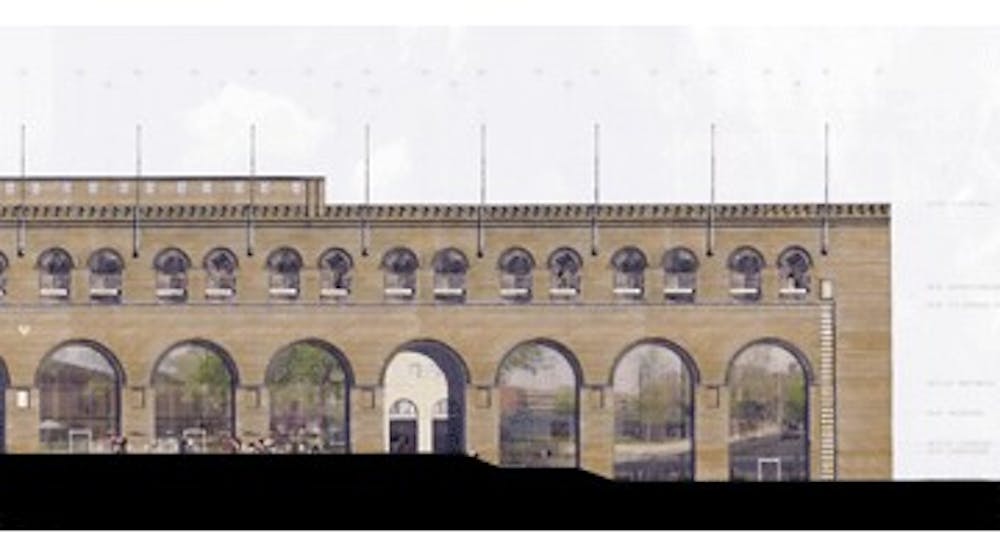Franklin Field, the oldest active football stadium in the United States, has undergone many historic changes over the years. It housed the nation's first scoreboard and in 1925, became both the largest football facility and the first with an upper deck.
But thanks to a recent discovery as part of the University's expansion and renovation of the east end of campus, Penn is turning back the clock.
"The architects became historians, and they discovered that the columns of the Franklin Field - which are impressively high - are even higher than they appear," Penn President Amy Gutmann said.
The stadium's famous arches were once roughly 20 feet taller than they are today. Two of them - at the westernmost end - are going to be excavated to their original depth for the Weiss Pavilion, the fitness center scheduled to open in Spring 2010.
Construction on the project, which was approved by the University trustees in June, is set to begin at the start of 2009, once the final design stages are complete, according to athletic director Steve Bilsky.
In the 1920s and '30s - back when Herbert Hoover and Calvin Coolidge manned 1600 Pennsylvania Avenue - there was a thoroughfare that ran along the north side of Franklin Field, complete with townhouses where the Lott Tennis Courts are now located.
Bilsky doesn't know when or why the street was filled in.
"The best guess is when they put the upper deck in, they didn't want people to have to come all the way down to a level below what exists right now, from the standpoint of exiting the stadium," he said.
Franklin Field doesn't have any elevators, and at the time, crowds over 50,000 weren't atypical.
Regardless, the Athletic Department was quite pleased about the excavation opportunity, which nearly doubles the space available for the Franklin Field pavilion to over 50,000 square feet.
Between one and three retail facilities, depending on student preferences, will comprise about 4,000 square feet, Bilsky said. Approximately 20,000 will be devoted to the intercollegiate weightroom, with the rest reserved for the fitness center and the upper level, which will not be developed until a later time.
The other elements of the Athletic Department's three-phase eastward expansion plan are progressing roughly on schedule.
"Nothing has happened to stop the phases from being in place," Bilsky said. "Whether it's going to get done exactly in the time frame that's said, time will tell."
Penn has hired Michael Van Valkenburgh Associates, Inc. - a firm that's worked on Wellesley College, Allegheny Riverfront Park and the restoration of Harvard Yard - to design Palestra Green, the park that will displace the Lott courts and neighboring parking spaces.
Nothing has been finalized, but the concept ("a park-like setting with legitimate fields that meet the dimensions" of varsity teams, Bilsky said) has been set for over a year.
Bilsky expects additional details to be available within six months, along with the results of feasibility studies on Palestra renovations and a proposed new track facility at the site of the Hollenbeck Annex.
The Levy Tennis Pavilion, home to Penn's indoor courts, may also receive upgrades, if the University can create a good plan and raise enough money
For all these projects besides the Weiss Pavilion, the trustees' formal approval is still required. While Bilsky doesn't anticipate any difficulties, a mere rubber stamp might not mesh with the project's magnitude.
"The aesthetics of it is very, very important, in addition to the pragmatic part," Bilsky said. "In that regard, it will get that much more scrutiny than most projects do, because it has that much more meaning."



